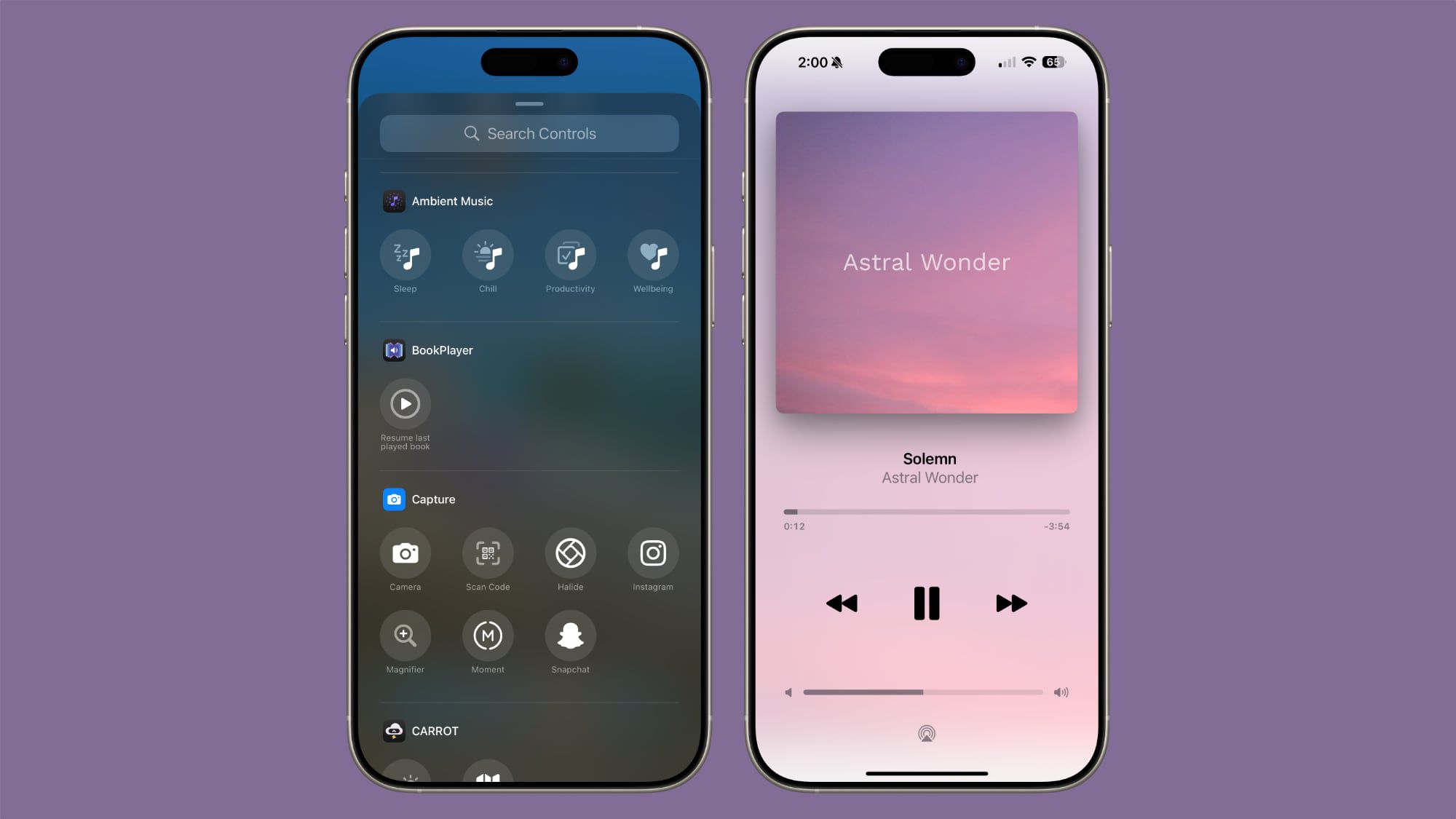Apple's iPhone 16e vs. Google's Pixel 9a
Google recently came out with the Pixel 9a, a mid-tier Android smartphone that rivals the iPhone 16e that Apple released earlier this year. We picked up a Pixel 9a to see how Google's lower-cost option compares to Apple's more affordable iPhone. The Pixel 9a joins the flagship Pixel 9 and 9 Pro smartphones that Google released last year, much like Apple added the iPhone 16e to the iPhone 16 lineup. The Pixel 9a is priced starting at $499, so it's $100 cheaper than the $599 starting price of the iPhone 16e. The iPhone 16e and the Pixel 9a don't look all that different, and both feature a minimal design with aluminum frames, a matte back, and a smaller camera setup than the flagship smartphones. The Pixel 9a has a plastic back instead of a glass back, so it's a little less premium but more durable. While the iPhone 16e has a protruding single-lens rear camera, the Pixel 9a has an almost flush camera bump with two lenses instead of just one. There's a standard 48-megapixel wide-angle lens, and a 13-megapixel ultrawide lens, while the iPhone 16e is limited to a 48-megapixel wide lens. The Pixel 9a and the iPhone 16e both take solid images, and it's tough to tell the difference between them in most situations. Google wins out when it comes to portrait mode images because of the better depth of field and the people limitation on the iPhone 16e, but Apple wins for video because the iPhone has some of the best video stabilization features available in a smartphone. As for display, the iPhone 16e has thinner bezels and a higher resolution, but the Pixel 9a has 120Hz refresh rate support and an always-on display, features you won't get with the 16e. Android smartphone makers still can't match Face ID even after all this time, so the Pixel 9a also has a fingerprint sensor. You're probably not going to run into performance issues with either smartphone, though the iPhone 16e may be better at high-performance games. The Pixel 9a unsurprisingly outperforms the iPhone 16e when it comes to AI, because Apple's AI features are just so far behind. Gemini is better than Siri and Pixel Studio beats Image Playground. Google does better at object removal in photos, and there are useful features for choosing the best image, adding people to a photo, and more. Make sure to check out our video to see the AI features in action and to see our comparison photos.This article, "Apple's iPhone 16e vs. Google's Pixel 9a" first appeared on MacRumors.comDiscuss this article in our forums
The Pixel 9a joins the flagship Pixel 9 and 9 Pro smartphones that Google released last year, much like Apple added the iPhone 16e to the iPhone 16 lineup. The Pixel 9a is priced starting at $499, so it's $100 cheaper than the $599 starting price of the iPhone 16e.
The iPhone 16e and the Pixel 9a don't look all that different, and both feature a minimal design with aluminum frames, a matte back, and a smaller camera setup than the flagship smartphones. The Pixel 9a has a plastic back instead of a glass back, so it's a little less premium but more durable.
While the iPhone 16e has a protruding single-lens rear camera, the Pixel 9a has an almost flush camera bump with two lenses instead of just one. There's a standard 48-megapixel wide-angle lens, and a 13-megapixel ultrawide lens, while the iPhone 16e is limited to a 48-megapixel wide lens. The Pixel 9a and the iPhone 16e both take solid images, and it's tough to tell the difference between them in most situations.
Google wins out when it comes to portrait mode images because of the better depth of field and the people limitation on the iPhone 16e, but Apple wins for video because the iPhone has some of the best video stabilization features available in a smartphone.
As for display, the iPhone 16e has thinner bezels and a higher resolution, but the Pixel 9a has 120Hz refresh rate support and an always-on display, features you won't get with the 16e. Android smartphone makers still can't match Face ID even after all this time, so the Pixel 9a also has a fingerprint sensor.
You're probably not going to run into performance issues with either smartphone, though the iPhone 16e may be better at high-performance games. The Pixel 9a unsurprisingly outperforms the iPhone 16e when it comes to AI, because Apple's AI features are just so far behind. Gemini is better than Siri and Pixel Studio beats Image Playground. Google does better at object removal in photos, and there are useful features for choosing the best image, adding people to a photo, and more.
Make sure to check out our video to see the AI features in action and to see our comparison photos.
This article, "Apple's iPhone 16e vs. Google's Pixel 9a" first appeared on MacRumors.com
Discuss this article in our forums




























![[Webinar] AI Is Already Inside Your SaaS Stack — Learn How to Prevent the Next Silent Breach](https://blogger.googleusercontent.com/img/b/R29vZ2xl/AVvXsEiOWn65wd33dg2uO99NrtKbpYLfcepwOLidQDMls0HXKlA91k6HURluRA4WXgJRAZldEe1VReMQZyyYt1PgnoAn5JPpILsWlXIzmrBSs_TBoyPwO7hZrWouBg2-O3mdeoeSGY-l9_bsZB7vbpKjTSvG93zNytjxgTaMPqo9iq9Z5pGa05CJOs9uXpwHFT4/s1600/ai-cyber.jpg?#)











































































































































![[The AI Show Episode 144]: ChatGPT’s New Memory, Shopify CEO’s Leaked “AI First” Memo, Google Cloud Next Releases, o3 and o4-mini Coming Soon & Llama 4’s Rocky Launch](https://www.marketingaiinstitute.com/hubfs/ep%20144%20cover.png)





























































































































![[FREE EBOOKS] Machine Learning Hero, AI-Assisted Programming for Web and Machine Learning & Four More Best Selling Titles](https://www.javacodegeeks.com/wp-content/uploads/2012/12/jcg-logo.jpg)








































































![Rogue Company Elite tier list of best characters [April 2025]](https://media.pocketgamer.com/artwork/na-33136-1657102075/rogue-company-ios-android-tier-cover.jpg?#)








































































_Andreas_Prott_Alamy.jpg?width=1280&auto=webp&quality=80&disable=upscale#)





























































































![What’s new in Android’s April 2025 Google System Updates [U: 4/18]](https://i0.wp.com/9to5google.com/wp-content/uploads/sites/4/2025/01/google-play-services-3.jpg?resize=1200%2C628&quality=82&strip=all&ssl=1)










![Apple Watch Series 10 Back On Sale for $299! [Lowest Price Ever]](https://www.iclarified.com/images/news/96657/96657/96657-640.jpg)
![EU Postpones Apple App Store Fines Amid Tariff Negotiations [Report]](https://www.iclarified.com/images/news/97068/97068/97068-640.jpg)
![Apple Slips to Fifth in China's Smartphone Market with 9% Decline [Report]](https://www.iclarified.com/images/news/97065/97065/97065-640.jpg)


































































































































